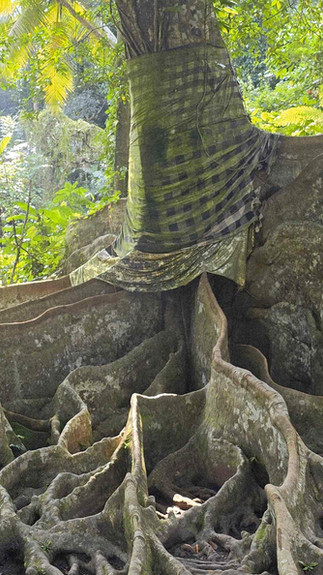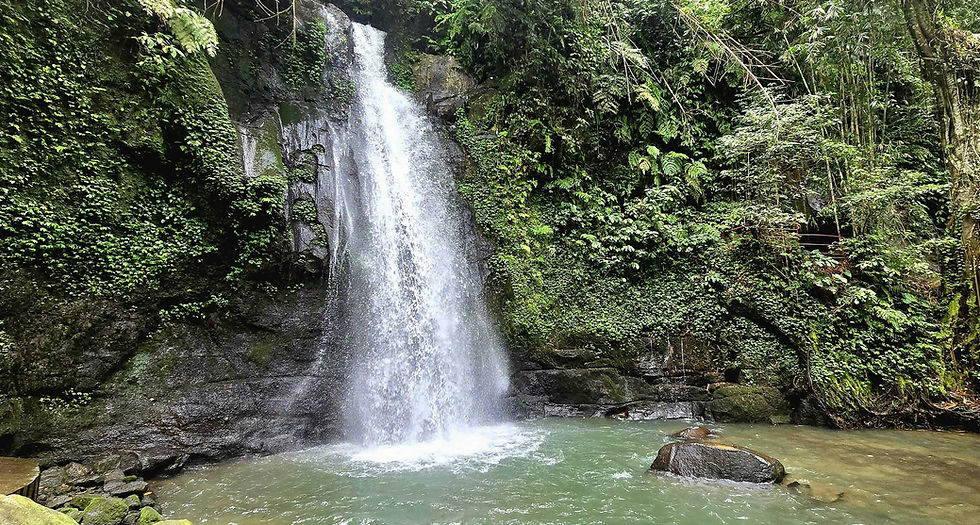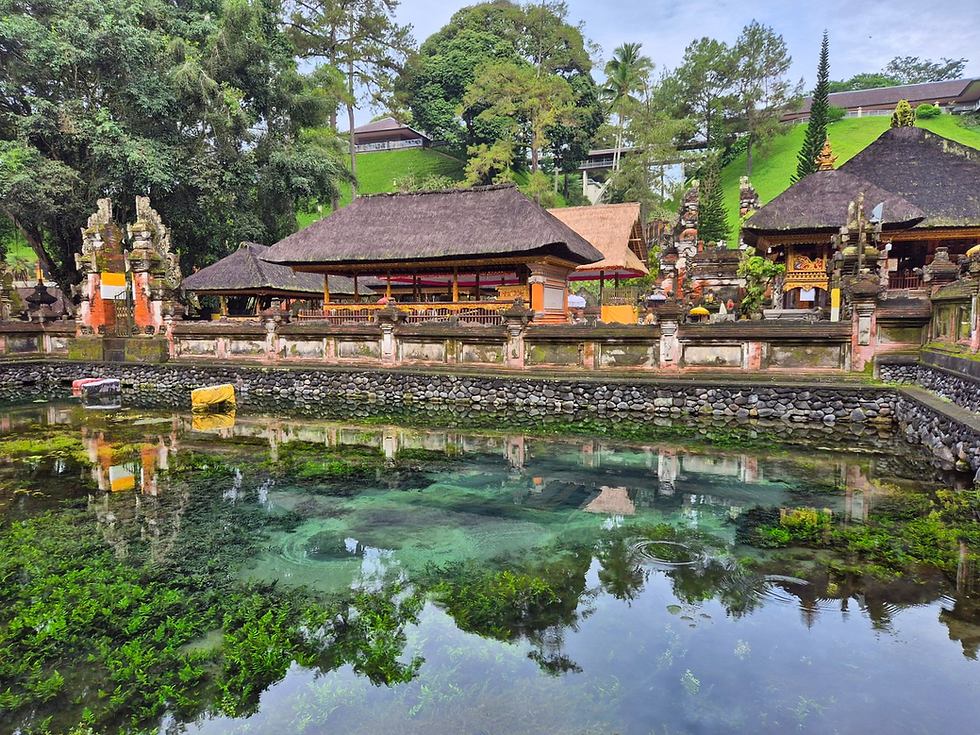Goa Gajah Temple
- Shannon
- Sep 18
- 4 min read
Updated: Oct 10
Bali’s Ancient Elephant Cave
Mystery surrounds the true origins of Goa Gajah, a 9th century cave temple complex near Ubud in central Bali. Rediscovered by Dutch archaeologists in 1923 after centuries hidden beneath dense vegetation, the site holds no actual link to elephants, despite its name. The term “Elephant Cave” likely evolved from Lwa Gajah, an old name associated with the nearby river, not from any animal symbolism found within the temple itself.

The cave is carved into a rock face and features a prominent entrance surrounded by a large stone relief of a grimacing figure. Scholars have debated its identity. Some propose Bhoma, others Kala, both powerful mythological beings meant to ward off evil. The carving is one of the most iconic examples of early Balinese temple art, showing a fusion of animist, Hindu and possibly Buddhist influences that predate the island’s later religious consolidation.

Inside the cave, the structure is relatively small and T-shaped, only extending around 13 meters. The interior walls are stained black from centuries of incense smoke. Three stone idols are housed within. The central figure is believed to be Ganesha, the elephant-headed Hindu deity of wisdom and removal of obstacles. Flanking alcoves contain representations of Shiva in linga form, underscoring the site's Hindu significance.

Despite the dominant Hindu imagery inside the cave, the surrounding complex displays evidence of early Mahayana Buddhist presence. To the north of the cave, remnants of Buddhist stupas and carved stupikas suggest that the site was once used by Buddhist monks for meditation. This indicates that Goa Gajah may have functioned as a shared religious site during a period when both belief systems coexisted in Bali.
The location of Goa Gajah is also significant. It was built at a campuhan, a sacred confluence of rivers, which was considered a spiritually charged location in Balinese cosmology. These water junctions were believed to purify negative energy and serve as thresholds between physical and spiritual realms, making them ideal sites for worship and ritual. Directly in front of the cave, a set of bathing pools was uncovered during further excavation in 1954. These pools, dating to the 11th century, feature six remaining stone female figures holding water vessels that function as spouts. The figures likely represent Yaksi, divine water bearers and the pools were likely used for ritual purification, aligning with ancient Balinese practices that emphasise the cleansing power of flowing water in sacred spaces.

A local legend connects Goa Gajah’s creation to Kebo Iwa, a mythological giant famed for his supernatural strength, who is said to have carved the cave’s massive entrance with his bare hands in a single night. This story endures in Balinese folklore as a powerful symbol blending myth with sacred geography. The tale highlights the awe inspired by the temple’s origins, intertwining human craftsmanship with divine intervention. It also reflects the cultural reverence for giants and spirits as protectors and creators of sacred spaces, embedding Goa Gajah within a broader narrative of strength, sacrifice and the fusion of myth and reality.

Goa Gajah endures not just as a relic of Bali’s distant past but as a silent guardian of secrets still beyond our reach. Its weathered stone and faded carvings whisper of a time when the island’s spiritual landscape was raw and untamed, a place where different beliefs clashed and merged, leaving behind an enigmatic legacy. Today, it stands as a reminder that some mysteries refuse to be fully uncovered, inviting each visitor to step beyond the surface and explore the shadows beneath Bali’s radiant facade.

🗺️ Location
Bedulu Village, Jalan Raya Goa Gajah, Blahbatuh, Gianyar Regency, Bali, Indonesia
🚆 How to get there
From central Ubud, head east for about 3 km along Jalan Raya Goa Gajah to reach the temple’s parking area, where a long flight of steps descends to the main grounds lined with souvenir shops and refreshment stands; at the base, you’ll find the Wantilan (large meeting hall), ancient stone carvings and 11th-century bathing pools featuring Hindu angels with waterspout vases. Getting there is easy. A taxi takes around 10 minutes from Ubud for 50,000 - 70,000 IDR, a Gojek or bike taxi costs roughly 15,000 – 25,000 IDR one way or you can hire a private driver for a half-day visit including nearby sites for 300,000 - 400,000 IDR.
⭐ Attraction Info
Goa Gajah is open daily between 8am - 6pm, with tickets costing 50,000 IDR for adults and 25,000 IDR for children, payable by cash or card. The entrance fee includes a sarong rental, so despite sellers at the parking area insisting you buy one, it’s unnecessary. You can enter any day and stay as long as you like, with access allowed until 7pm if you arrive before 6pm. Most visitors spend about an hour exploring the Elephant Cave but to see the entire site down to the river, plan for 1.5 to 2 hours. The best times to visit are early mornings before 10am or late afternoons after 5pm when the jungle provides more shade. Although the dry season from mid-March to October is preferred, the temple remains open year-round. Visiting during the wet season (November to February) can mean heavy rain but also fewer crowds, easily managed with an umbrella.

Thanks for reading about Goa Gajah Temple - Check out more awesome destinations here!


























